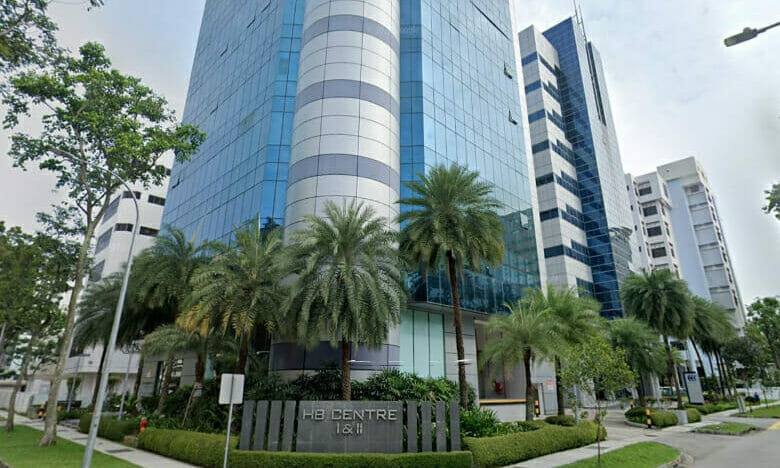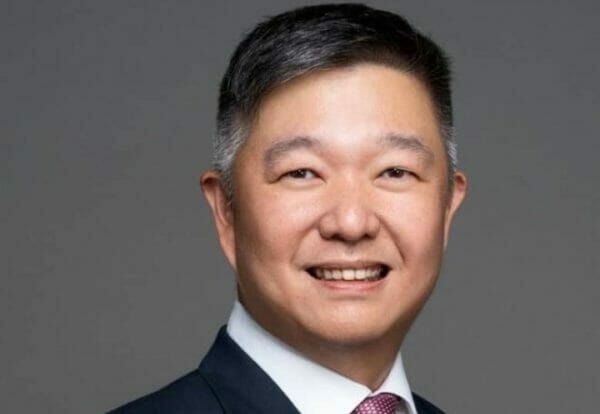
Ho Bee Land is disposing of HB Centre I and II at a gain of over S$47 million (Image: Google Maps)
Just over a year after buying a landmark office building in London for £718 million (then $972 million), Singapore’s Ho Bee Land is selling off assets in its home market with the stock exchange having recently queried the developer over its ability to pay its debts.
Ho Bee declared to the bourse on Wednesday that it has agreed to sell a pair of freehold industrial buildings in the city’s Geylang area for S$115 million ($85.6 million) with proceeds from the sale to be used to support its operations. The mid-sized builder’s buy of The Scalpel in the City of London in February of last year ranked as one of the UK’s largest deals for a single building in 2022.
“The disposal is part of the group’s capital recycling strategy and is in its normal course of business,” the statement read. Ho Bee is booking a S$47.1 million gain from the sale, which the company says “shall be used for the general working capital purposes of the group.” The developer’s 27 February release of its financial results for the second half of 2022 showed a 93 percent drop in profit from a year earlier, with the company’s stock plunging more than 7 percent in the following days.
The asset sale was announced five days after the developer’s chief executive, Nicholas Chua, reassured the exchange that Ho Bee was finalising documents for an S$810 million term loan to repay a S$930.8 million bridge loan used to finance its purchase of The Scalpel, with the SGX having focused on that debt in its inquiry.
In communications to Mingtiandi following publication of this article, Ho Bee Land representatives indicated that the company is on firm financial footing and that it had issued an option for the sale of the two industrial assets in November of last year, and that the timing of the sale and SGX queries was coincidental.
In their comments to Mingtiandi, company representatives have described the stock exchange queries regarding its financial status as “not unusual.”
Selling Freehold Sheds
Ho Bee’s asset sale sees it parting with 12 Tannery Road and 31 Tannery Lane, a pair of adjacent industrial properties in a regentrifying district northeast of the city-state’s downtown core, with analysts pointing to their freehold status as a particular source of value given government regulators’ tight control of state-owned industrial land.

Ho Bee Land CEO Nicholas Chua
The 10-storey high-tech building on Tannery Road has a gross floor area of 9,347 square metres (100,600 square feet), while the neighbouring asset on Tannery Lane spans 3,701 square metres across eight floors.
The unnamed buyer is expected to close on the transaction by June, with the assets selling for an average of around S$8,814 per square metre of gross floor area.
The sale price for the properties represents a nearly 70 percent premium from an independent valuation as of December 2022 which marked them at a combined S$67.9 million.
Lynus Pook, executive director and head of industrial services for Colliers in Singapore, who was not involved in the transaction, sees the freehold status of the assets as a key attribute in a market where local investors are competing with global fund managers for industrial assets.
“Freehold industrial properties tend to stand out as a flexible asset class, given that there are minimal restrictions in the acquisition process,” he said in response to Mingtiandi’s queries on Wednesday. “From the view point of capital preservation, freehold assets tend to have an upper hand as historical trends have shown there is capital appreciation for this asset class.”
The Geylang properties, which are in the district’s MacPherson precinct, are located about 10 minutes’ walk from Aljunied Park and within three kilometres (1.86 miles) of both Potong Pasir and Paya Lebar MRT stations.
Further east is the Paya Lebar Airbase, which will make way for a green residential community starting from 2030. The airbase’s 3.8 kilometre runway is set to be transformed into up to 150,000 new homes along a stretch of green space surrounded by amenities and new commercial establishments.
Property agency ERA Singapore brokered the sale of the two assets, according to a LinkedIn post.
Profit Drops in 2H
The stock exchange reacted to Ho Bee’s 27 February release of its 2022 financials with three queries, the second of which reads as follows, according to Ho Bee’s statement:
Given the Group’s significant current liabilities of S$1.38 billion, and cash and bank balance of only S$327.4 million as of 31 December 2022, please disclose:
(i) the Board’s assessment of whether the Company’s current assets are adequate to meet the Company’s short-term debt of S$1.23 billion, including its basis of
assessment; and
(ii) how the Company intends to fulfil its significant payment obligations in the next 12 months. Where the Company has worked out debt repayment plans to fulfil its debt obligations, please disclose if the Company is on track to fulfilling these obligations.
In a statement responding to queries by the Singapore Exchange on Friday, Ho Bee said its board and management are confident that the company will be able to meet its upcoming financial obligations, which include a separate S$94.5 million term loan that it plans to resolve within the first half of the year, in addition to its bridge facility for the acquisition of The Scalpel.
Ho Bee Land said it is also expecting positive cash flows from its operations and capital distributions from unspecified associates in China this year.
The developer founded by magnate Chua Thian Poh saw its profit attributable to owners of the company for the second half of its fiscal year plunge from S$225 million in 2021 to just S$16 million last year, despite a 35 percent increase in revenue, according to its latest financials. On an operating basis, profit fell 80 percent from S$189 million in the second half of 2021 to S$37 million during the same period last year.
During the second half of 2022 the company paid nearly S$56 million in interest on its debt — nearly triple its expense in this category during the same period a year earlier — while the value of its investment properties was marked down by nearly S$115 million.
Note: an earlier version of this story presented figures from Ho Bee Land’s 2022 2H financial results as full year figures. The story has been updated and Mingtiandi regrets the errors.
Leave a Reply